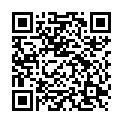|
|
|
| Module code: E930 |
|
2V+2PA (4 hours per week) |
|
5 |
| Semester: 9 |
| Mandatory course: no |
Language of instruction:
German |
Assessment:
Presentation, project work, oral exam
[updated 13.03.2010]
|
E930 Electrical Engineering, Master, ASPO 01.10.2005
, semester 9, optional course
|
60 class hours (= 45 clock hours) over a 15-week period.
The total student study time is 150 hours (equivalent to 5 ECTS credits).
There are therefore 105 hours available for class preparation and follow-up work and exam preparation.
|
Recommended prerequisites (modules):
None.
|
Recommended as prerequisite for:
|
Module coordinator:
Prof. Dr. Martin Buchholz |
Lecturer:
Prof. Dr. Martin Buchholz
[updated 13.03.2010]
|
Learning outcomes:
After successfully completing this course, students will have a detailed understanding of signal transmission in fibre-optic cables and networks. They will be able to estimate and calculate nonlinear effects in optical waveguide systems. By studying an existing high-rate optical transmission path, students will become acquainted with the requisite hardware components and the special features of optical communication technology. They will know how to use the relevant measuring instruments and be able to independently verify the quality of an optical transmission path. Students will have an up-to-date knowledge of optical communications technology, the available optical components and developments in the field of integrated optics.
[updated 13.03.2010]
|
Module content:
1.Nonlinear effects in optical waveguides
Parametric four-wave mixing, self-phase modulation (SPM), cross-phase
modulation (XPM)
2.Noise in optical systems
3.Structure and operating principles of optical components
4.Integrated optics
5.Fibre-optic transmission systems
6.Optical measurement technology
[updated 13.03.2010]
|
Teaching methods/Media:
Lecture notes, video projector, laboratory work
[updated 13.03.2010]
|
Recommended or required reading:
Agrawal, G.: Nonlinear Fiber Optics, Academic Press, 2001
Voges, E., Petermann, K.: Optische Kommunikationstechnik, Handbuch für Wissenschaft und Industrie, Springer, 2002
Razavi, B.: Design of Integrated Circuits for Optical Communications McGraw Hill Engineering, 2003
Derickson, D.: Fiber Optic Test and Measurement, Prentice Hall
Unger, H.-G.: Optische Nachrichtentechnik, Hüthig, 1993
[updated 13.03.2010]
|


